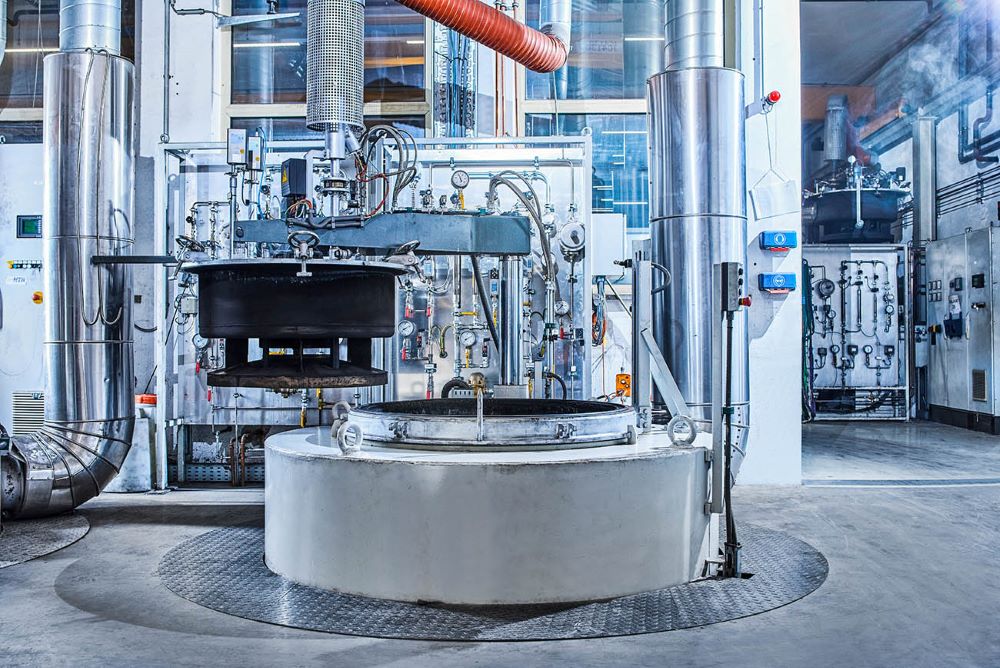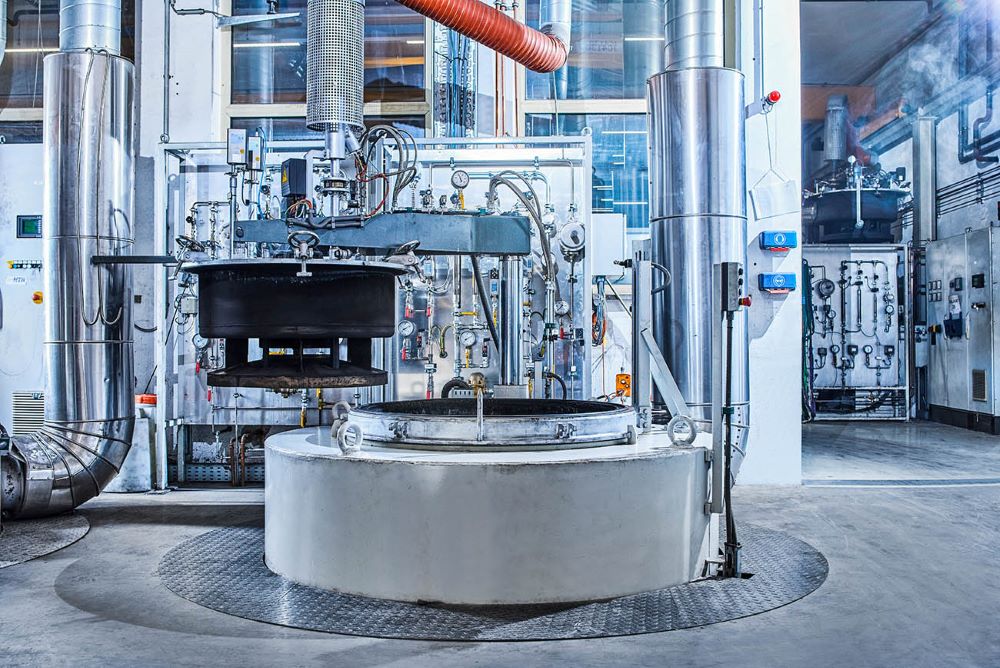
NITRIDING
Gas nitriding
During gas nitriding, nitrogen is split off from ammonia, which penetrates the component surface at temperatures between 500°C and 600°C and leads to the formation of a wear-resistant nitride layer.

Advantages of the process
No
distortion
Nitriding is the only hardening process in which there is no process-related distortion of the component.
Hardening of
partial areas
Precisely defined areas of the component can be hardened by covering the other surfaces with a protective paste.
Outstanding
component properties
Nitriding produces components with improved corrosion protection as well as high wear and vibration resistance that can withstand the heaviest loads.
None
post-processing
As no distortion occurs during the hardening process, components can generally only be nitrided after completion.
Hardening without process-related distortion
Gas nitriding can provide a component with improved corrosion protection as well as high wear and vibration resistance. The components hardened in this way fulfil their task even under the highest loads.
Gas nitriding is a thermochemical process that takes place at relatively low temperatures between 500°C and 600°C. Nitrogen is converted from ammonia into nitrogen. Nitrogen is split off from ammonia, which penetrates the steel surface and leads to the formation of a diffusion and bonding zone. This immediately hard nitride layer does not require a quenching process.

The hardening process with the least distortion
Charging can also be carried out as bulk material. Surface hardness, nitriding hardness depth and layer thicknesses can be influenced through targeted process control and material selection.
As production-related stresses can have a negative effect during the nitriding process, the components should be annealed beforehand to minimise stress. Due to the low thermal load and the slow heating and cooling, gas nitriding is the hardening process with the least distortion. The thickness of the compound layer of 0.01 millimetres can already be taken into account during soft machining. This means that components can usually only be nitrided after they have been finished. The embrittlement of sharp geometric transitions can be prevented by applying a masking paste.


Only tempered nitriding steels are suitable as materials.
The surface of the workpiece must not have any edge layers and must not be decarburised or oxidised. It is important to clean the component before treatment so that it is free of oil, grease and rust.
The achievable surface hardness depends solely on the primary material and is measured using the Vickers hardness method, as processes such as Rockwell push through the nitrided layer. Nitride-forming elements such as aluminium, chromium, cobalt and molybdenum promote the process. Existing surface hardening, on the other hand, has a negative effect on the formation of the nitrided layer.

Nitrocarburising and oxidising
In order to optimally meet all of our customers' requirements, we also offer nitrocarburising and oxidising in addition to short-term nitriding and long-term nitriding.
If the component surface is additionally enriched with carbon during gas nitriding, the process is known as nitrocarburising.
We carry out this process, which creates a nitriding depth of 0.1 to 0.5 millimetres, overnight. As a rule, your component is ready for collection the following working day.
Nitrocarburising focuses on improving the sliding, wear and emergency running properties. If a further improvement in corrosion resistance and the coefficient of friction is required, we are also happy to oxidise your component. By adding water or oxygen, the nitride layer on the surface of the workpiece is converted into an iron oxide layer. By customising the temperature, duration and atmosphere, the corrosion resistance of your components can be significantly increased compared to a nitride layer. The surface of oxidised workpieces is anthracite-coloured and has a lower coefficient of friction than nitrided surfaces.
Key figures

Temperature:
up to 600°C

Oven size:
Ø 900 x 2000 mm

Lead time:
from 12 h

Nitriding hardness depth:
up to 0,8 mm

Max. loading weight*:
2.000 kg
*per batch for standard sizes and treatments

Request a quote
Request a free and non-binding
offer from us now!
Info!
For the preparation of your individual offer
we need the following information from you:
- Material
- Weight and quantity
- Desired surface hardness (in HV) with tolerance field
- Desired nitriding hardness depth with tolerance field
- Test specification
If a determination of the nitriding hardness depth or compound layer thickness is required, a component must be destroyed.


Do you have any questions?
The HTR team will be happy to advise you!








